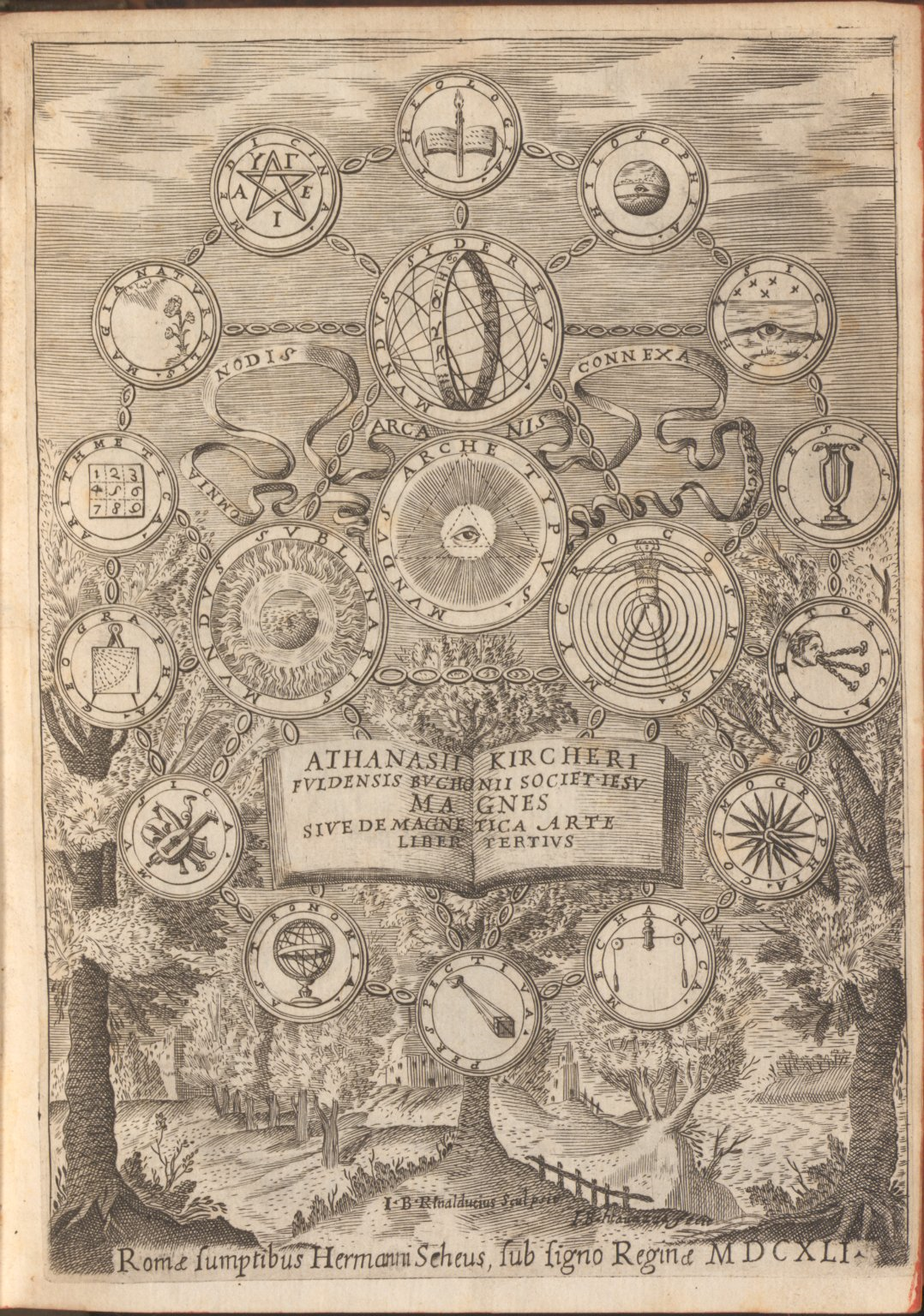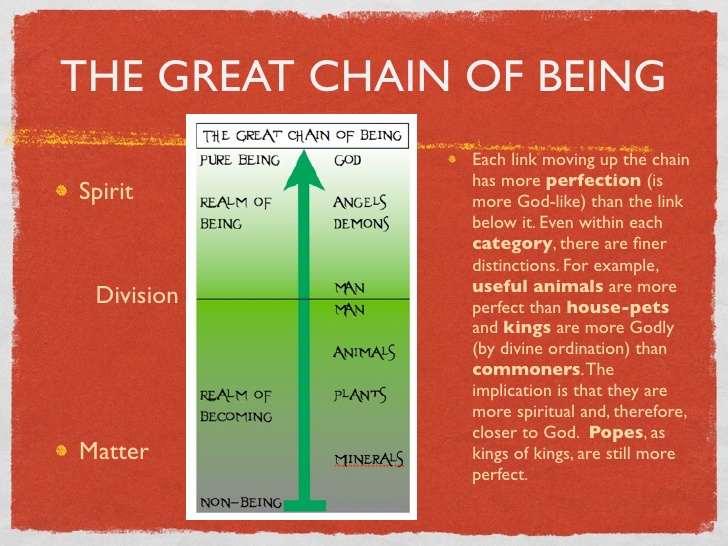Principe 2: The Connected World
Early modern natural philosophy saw a connected world, rather
than the narrow worlds of science (the word scientist did not
come into use until the 19th century)
they used different tools in their minds than the ones we use
today
astrology vs. astronomy
astronomy: position and physics of stars
astrology: effect of the stars on our lives, but how?
- astrologers believe everything is connected
- astronomers say show me the force that makes the
connection
- today you need to be able to explain the steps, not just
see a vague connection
astrology vs. astronomy
- astrology is your horoscope--prediction of
future events based on the position of the stars
- astrology did not keep up with changing
scientific knowledge
- scientists would say the idea the position of
the planets affects human events is ridiculous
- because there is no causal connection
- long process of figuring out what had causal
connections and what didn't
Ladder of nature
from Plato (also called great
chain of being or scala natura)
- every part of the creation has its place in a
hierarchy with God at the top and matter at the bottom
- this gives humans an important place and suggests that we
can climb the ladder, so was a contributor to humanism
macrocosm-microcosm: the human body is ordered on a small scale
in ways parallel to the stars and planets on a large scale--yet
another idea of how everything is connected
- there are correspondences between the macrocosm and the
microcosm--the same patterns can be found in both: "as above,
so below" p. 23
- macrocosm: the stars and planets
- microcosm: the human body
- this means there are causal connections

Causal knowledge from Aristotle (difference
between Plato and Aristotle)
- four kinds of causes: efficient, material, formal, final
(p. 24)
- the final cause is the reason for something existing, its
purpose
- implies that its creator has a plan
- notice that this means understanding something involves
understanding its relationship to other things
- everything has a purpose and clear relationships to other
objects
Note that all these key thinkers lived before Jesus, in a
society that worshiped other (pagan) Gods, but their ideas were
adopted by Christians
Crucial point in all of this: one of the goals of early
modern science was to study how everything was connected,
whether in a chain or by parallels or by influences
Notice that the goal of this book is not to find the origins
of modern science but to understand how science was different
during the scientific revolution
We might look back and say their ideas were a mixture of
magic and science. But we need to think carefully about
what we mean by magic, and what they meant
- science is understanding how the world works in an
organized, formal way
- equivalent to natural philosophy but science looks
at narrower causes
- technology is modifying the environment by our actions
- magia naturalis is the equivalent of technology, based on
correspondences
astronomy is to astrology as technology is to magic?
assumption here: science is theory, understanding, technology is
practice, machines, being able to manipulate nature
the logic of correspondences (everything is actively connected
to everything) gives us astrology, alchemy, and Magia Naturalis
Magia Naturalis (natural magic/mastery)
- as well as what we can detect with our senses there are
hidden qualities and connections in nature
- can we learn and use those hidden connections?
- learn by close observation and collecting existing
knowledge
- but also resemblances (signatures) may give clues: a
walnut looks like a brain so might be medicine for the brain
(is eating kidney beans beneficial to the kidney?)
- analogies are visible signs of hidden connections built
into the creation (p. 30)
- connected things acted on each other by sympathy (sympathetic
resonance)
- This was understood as vibrations in some medium, which
might be air or might be the spiritus mundi, an invisible
substance that is everywhere and can transmit influences
Practical applications
- astrology: the positions of the sun and planets affect
our individual lives
- medical astrology: melancholy comes from too much black bile
so should be counteracted by wearing yellow and eating food
spiced with saffron at times when Jupiter (the planet
corresponding to black bile) is in an influential position
- the system is rational and based on what were understood
to be natural forces, not demons
Religious motivation
- early modern scientists were practicing Christians and
saw no contradiction between science and faith
- Christianity was understood as a body of agreed-upon fact
whose details might be worked out
- we understand God through both the Bible and the book of
nature, God's creation
- studying nature brings us closer to God because we "learn
much about the creator by studying the creation" (p. 37)



